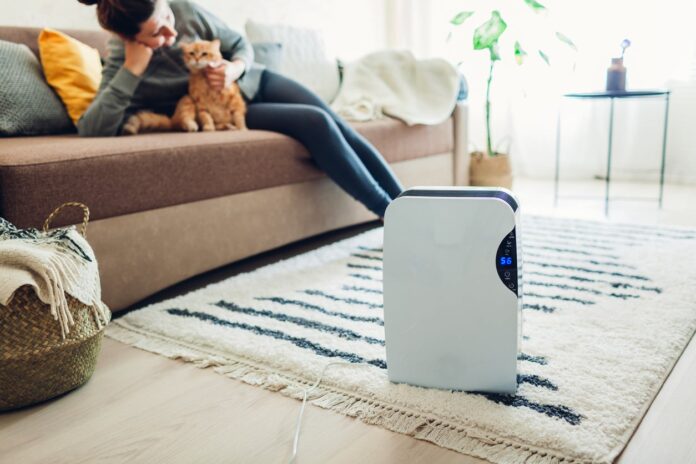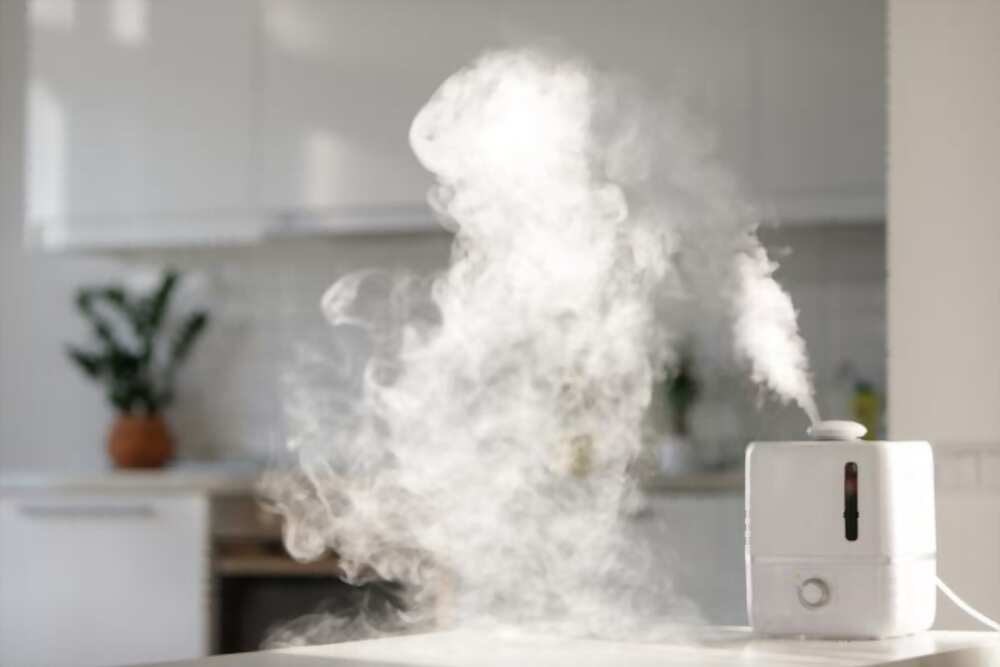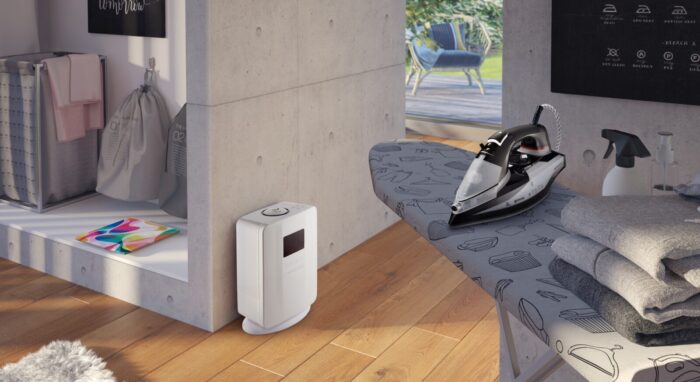
A dehumidifier’s job is straightforward. It removes excess humidity from a room. In doing so, it protects you from respiratory problems. And it helps maintain the value of your property.
Dehumidifiers come in different shapes and sizes. Some of them are good at dehumidifying small rooms during the summer. Others are industrial-sized and can work all year round.
Against that backdrop, discover what to look for in a good dehumidifier below.
Pint Capacity (Extraction Rate)
Pint capacity describes the amount of moisture a dehumidifier can remove from a house within 24 hours. This moisture is measured in pints or liters. For clarity, a pint is 473 milliliters or 16 ounces.
Many dehumidifiers in the market remove between 20 and 40 pints of moisture per day. This translates to an average of 10 and 20 liters.
These devices are suitable for homes and small offices. If you’re looking for an industrial dehumidifier, though, you should consider one that removes over 70 pints.
That being said, consider the size of your house before you choose a dehumidifier. A 20-pint device can dehumidify a moderately humid room measuring 300 square feet. But it will struggle to remove the same amount of humidity in an 800-square-foot room.
Tank Size

After a dehumidifier removes moisture from your house, it stores it in a tank. Once this tank is full, you can then drain it out with the help of a pipe. Logically, you want an appliance with a sizeable tank.
Most home-use dehumidifiers have tanks that can hold five to 10 liters of water. But you can also buy larger appliances with tanks that can hold up to 25 liters. Of course, they’re more expensive.
Select a gadget with an auto shut-off feature that turns it off immediately after the tank is full. Also, ensure it has a considerably long pipe to help get rid of the water safely.
Speaking of water removal, check if the unit supports continuous water drainage. This saves you the need to empty the tank constantly. Just ensure you have a place to direct the discharged water far away from your house.
Noise Level and Energy Consumption
No one really wants a loud dehumidifier. And that’s why you must check the noise level before you purchase one of these appliances. Find a tool with a noise level of between 40 and 55 decibels.
Avoid appliances that produce more than 65 decibels. Not only can they disrupt your productivity during the day, but they’ll also affect your sleep at night.
When it comes to energy consumption, select an appliance that can help you save money. Of course, it also needs to do its job. So, don’t compromise size to save on power consumption.
If you’re after a small dehumidifier, choose one rated to consume 300 watts or fewer. For context, we’re talking about a 20 to 30-pint appliance. A big 70-pint gadget may consume up to 700 watts.
As a pro tip, look for an energy-star rating on an appliance before you buy it. This feature helps you confirm that the gadget is energy efficient.
Smart Features

Dated dehumidifiers use knobs to control extraction rates. Knobs can be confusing. Modern tools use technology to make things easier for you. For example, they have a hygrometer that detects the humidity level in your house.
By doing so, they can remove excess moisture automatically. These devices also come with an adjustable humidistat to help you control the humidity level in the house manually.
Another cool feature of modern appliances is the remote control feature. It works with Alexa or an in-built app to help you adjust settings remotely. Then there’s the auto shut-off feature we mentioned. It detects when the tank is full and turns the device off.
Refrigerant/Desiccant
Dehumidifiers come in two main types: refrigerants and desiccants. Refrigerants use compressors to remove moisture from your house. They work efficiently at room temperature. They also remove up to 25 liters of water per day, which is why they’re so popular.
Desiccants absorb moisture using a desiccant wheel that works like a sponge. They’re great for cold places like basements and garages. But they tend to have smaller tanks.
Portability
Unless your entire house has humidity problems, you probably need a portable unit. A small, portable but powerful dehumidifier can get rid of moisture from a room measuring 1000 sq. ft. hassle-free.
Of course, you need to consider factors like tank size and pint capacity before you select the right appliance for dehumidifying your home. Don’t sacrifice capacity for weight. Strike a balance to get a unit that will do its job effectively. Yet, it’s light enough to carry around your house.
To provide some context, the best portable dehumidifiers online weigh between 30 and 45 pounds. Anything heavier than 50 pounds will likely give you mobility problems.
Cost

Dehumidifiers can be cheap or pricey depending on their size, pint capacity, brand name, and smart features. Generally, you want to buy products from trusted brands.
However, don’t overpay for a unit just because of the brand name. Consider priced dehumidifiers from less popular brands. More importantly, focus on the essential features of a dehumidifier.
Focus on how much moisture a dehumidifier removes from your house. Check its energy consumption level, portability, and control features.
A Laundry Mode
A laundry mode is useful if you lack a tumble dryer in your home. It helps you dry damp clothes in your house faster. The way it works is that you place the damp clothes on a rack close to the dehumidifier.
After that, enable the laundry mode for a couple of hours. The machine supplies dry air to the wet clothes, thereby sucking moisture from them. That being said, the laundry mode of many machines consumes energy at an above-average rate.
Pick the Right Dehumidifier for You
Now that you know what to look for in a dehumidifier, we hope that you can find the right appliance for you. Shop around to find the best deals. Also, look out for dehumidifiers with warranties to protect you from unexpected malfunctions.
















